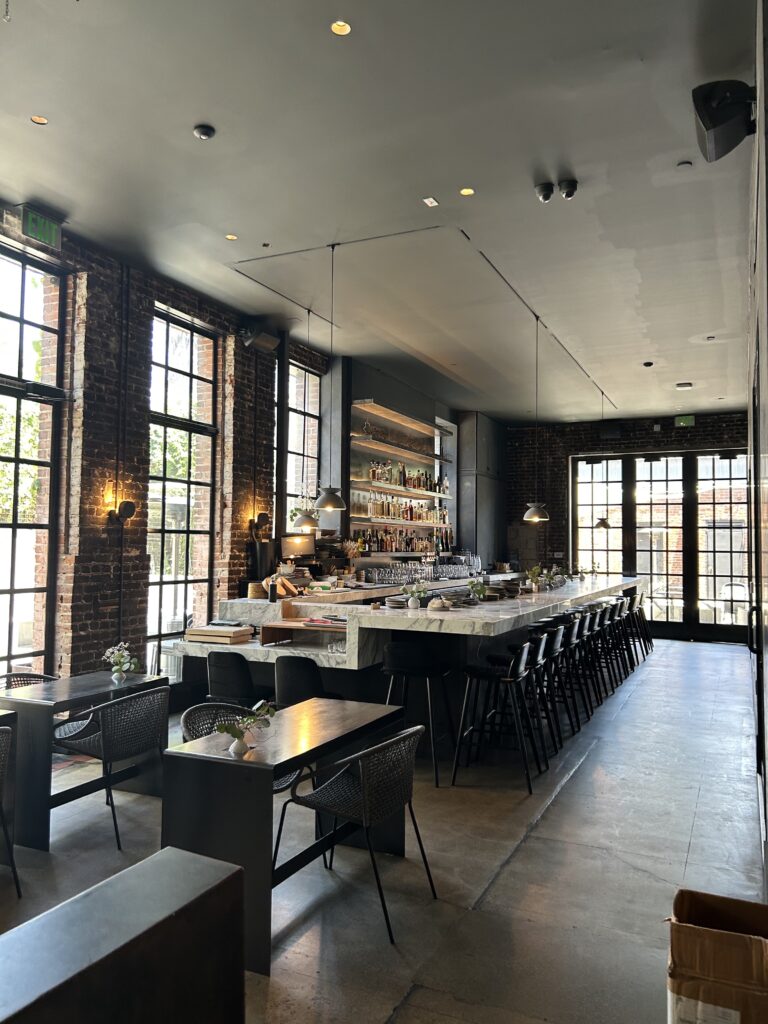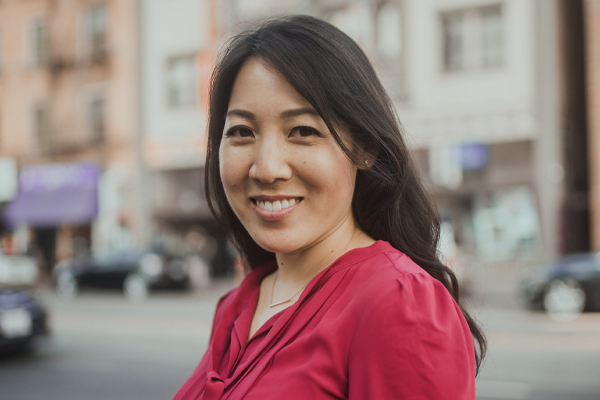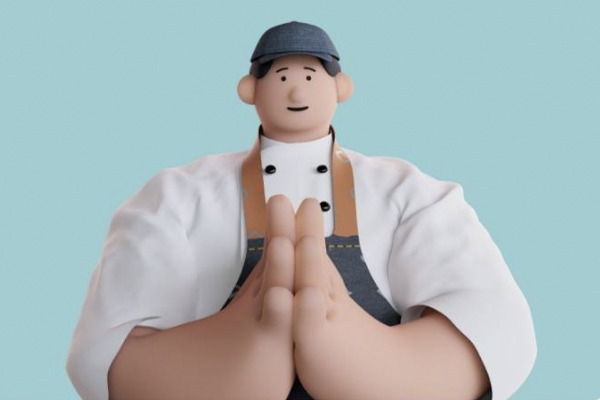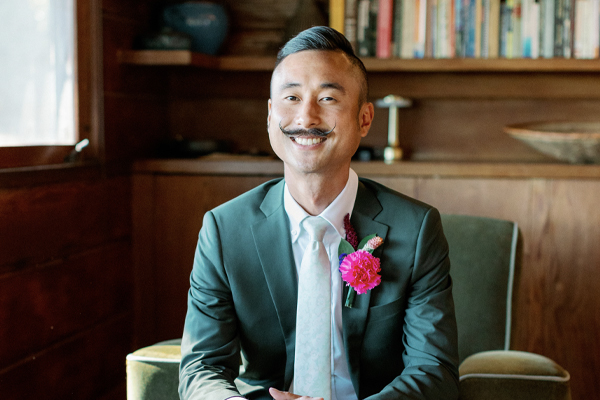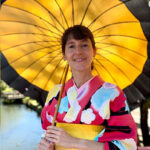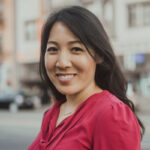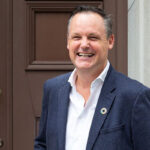Who we interviewed with……
Mr. Alex Suzuki
Chef from Los Angeles. He began his culinary journey working in Studio City at a small Italian restaurant, Ombra, making pastas and pastries while learning the art of Japanese Yakitori in Arcadia. His love and passion for food, driven with his desire to learn more about his culture as a Second Generation Japanese American, Chef Alex journeyed to Japan.
In Japan, Chef Alex studied sushi and kaiseki cuisine, working at a traditional Ryotei Ryokan in Shizuoka, then moving to Tokyo to work at a Kappo Restaurant, then finishing his journey teaching foreigners and tourists how to buy and process fresh fish at the Toyosu market.
Returning to Los Angeles, he dived straight into French cuisine at renowned Chef Thomas Kellers, Bouchon in Beverly Hills working under the best chefs in Los Angeles. Refining more of his skills in Los Angeles, Chef Alex Consulted and opened a small Omakase sushi in Orange County before joining kodō, a modern American Japanese restaurant inspired by the many flavors and influences of Los Angeles.
Drawing inspiration from other cultures in Los Angeles, Suzuki brings a fun twist to tradition by combining fresh seafood with charcoal grills, expressing the techniques, ingredients, and both flavors and techniques of Japan and throughout many cultures.
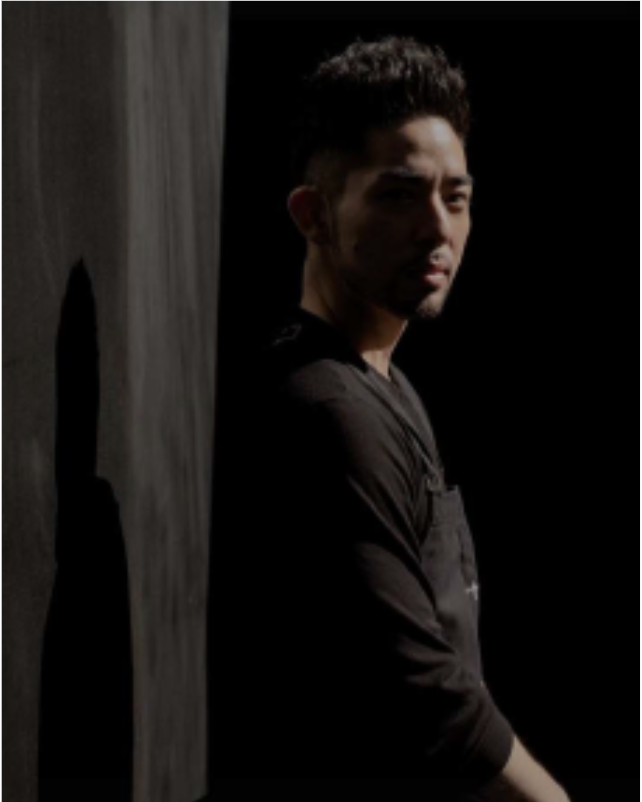
The Arts District is known as one of the hottest places in Los Angeles. While it’s located near Little Tokyo, there is a restaurant that offers a different type of Japanese cuisine from what can be found in Little Tokyo. The restaurant’s name is kodō.
kodō has been favorably spoken of for its interior design and unique dish ideas, says Mr.Alex Suzuki, the chef of kodō.
kodō has two faces: A café and a restaurant.
The café is designed in a “traditional Japanese style” to match the concept of the hotel (ryokan “Rykn”) that is currently undergoing. The café is full of natural materials such as wood and stone. Simple as it can be, yet luxurious and relaxing.
At night, people are walking through the café to the restaurant in the back. The restaurant features a dark and romantic atmosphere that blends in very nicely with the Arts District atmosphere. It is also important to note that it was renovated from a firehouse building, and the renovators were their own design team. Suzuki says, “We want the place to be where people would come dressed up for anniversaries or other special dates.”
The contrast between the brightly themed café and the classy, themed restaurant seems to be popular. Suzuki says customers would get a little surprised every time.
After he finished his culinary college in the U.S., Suzuki went to Japan, where he studied kaiseki and kappo for about five years while working at a Ryotei Ryokan and other fine dining Japanese restaurants throughout Japan. Then he returned to the U.S., where he worked at a French restaurant for two plus years whilst establishing himself in many events and opportunities throughout LA. Then went on to open a sushi restaurant in Orange County. He enjoyed learning about many flavors and ingredients that differed around the world. While he believes that cooking is something that he can learn forever, he has incorporated his identity as a Japanese chef and the international culinary ideas he has learned to offer his original style of Japanese cuisine.
kodō was opened as an izakaya concept, but Suzuki started combining the French and kaiseki skills he had primarily studied to offer modern American cuisine. Suzuki still incorporates traditional Japanese cuisine and cooking methods, such as making sushi with rice produced in Japan and cooking fish in a traditional Japanese way. Binchotan charcoal is used for all grilled dishes.
On the other hand, Suzuki states, “I think it’s a little boring to just serve Japanese cuisine, for me. There are already a lot of Japanese restaurants in Los Angeles, so why should someone go to kodō in the Arts Districts? I want to show people why they should dine at kodō in the Arts Districts.”
So he developed the modern American cuisine. For example, kodō cooks Japanese ingredients such as tofu, edamame, maitake mushrooms, and bamboo shoots with French-Italian seasonings to meet what people here crave. Instead of using the traditional garlic soy sauce, they rather use the sauce with cilantro and parsley, inspired by the Mexican-style ceviche. Sticking with Japanese ingredients, and combining them with the cooking method, technique, and taste from all around the world, is the kodō style. It’s the best of both worlds. Such as, the karaage is dipped in an American-style batter and served with a salty sauce, plus a variety of spices and other ingredients that give the karaage a different taste. Suzuki also adds a new twist to grilled fish with a tofu cream sauce and other flavors.
Suzuki states, “I try not to forget the fundamentals of Japanese cuisine that I have learned thus I use them in various ways and change them slightly to make the food even more interesting. Not only Japanese people but also people from all over the world come to my restaurant. I like to see them surprised to know that Japanese cuisine can also be used in this way and that way! I want them to be surprised. I’m always looking for interesting things.”
kodō’s chef members have also studied various types of cuisine, including French and Italian. Suzuki wishes for everyone to feel the heartbeats (kodō means heartbeat in Japanese) of all of them.
This is where it makes sense to offer Japanese food in Los Angeles.
Not to be forgotten, kodō’s other charm is the full bar.
At kodō, people enjoy all the mezcal, natural wines, vodka, gin, and cocktails as well as shochu, a Japanese liquor. “Pairing drinks with food is another way to enjoy kodō,” Suzuki recommends.
“I want customers to actually come and experience, eat, and learn for themselves. We change our dishes according to the season, so you will definitely want to come back again,” Suzuki said confidently with a brilliant smile.
kodō is about a 10-minute drive or 30-minute walk from Little Tokyo. This area is packed with restaurants like it’s a battleground. Each restaurant has to play competitively, or it would bore the customers. Suzuki sometimes feels the pressure to compete and survive in the Art District.
“The Art District is a place you don’t come to unless you have a reason to,” he says. There is no parking, and it is not a convenient place.
“I’m always trying to figure out how to make people feel like they have to come to kodō to experience what we proudly offer, or that their destination cannot be anywhere but kodō.”
When we asked him the reason for opening a restaurant in the area, while it can be much easier to attract customers in the nearby Little Tokyo, Suzuki replied that he wanted to move away from Little Tokyo because he wanted to create a “difference.”
“If it’s in Little Tokyo, I feel like my restaurant would be, kind of, categorized in ‘Japanese cuisine’ or ‘Japan.’ I would rather challenge myself in a harder field if that helps my restaurant to be unique.” He wanted people to come with a reason. And that reason should be strong enough to make them find the parking.
For those who already love Japan, kodō is a place where they can experience Japanese food in a completely different way, and experience Japanese nature and ryokan style from a completely different perspective.
You will realize that times are changing by experiencing Japanese food in Los Angeles.
Both your love of Japanese cuisine and your desire to experience America and Los Angeles can be fulfilled at kodō.
kodō also opens its space for an event, private use, a wedding (on the patio), or a large private company dinner. There is an option for a course meal.
We did our best to write an article about kodō, but we can’t fully describe the charm of kodō without you actually going there and experiencing it with all of your senses. Now, you have already decided on the place for your date this weekend, right?
【Special Interview 2023】”Key People” in Little Tokyo

